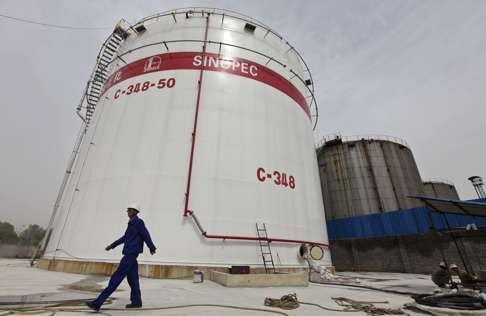
Chinese credit quality to improve over next two years, says Fitch
Mainland firms to enjoy better cash flow and reduced bank loans, thanks to central government support
Despite widespread concern that China’s economy is headed for crisis amid ballooning debt and tapering private investment, credit rating agency Fitch Ratings is optimistic that credit quality in Chinese companies over the next two years will strengthen on the back of government support.
State-owned enterprises (SOEs) in particular, which represent 68 of the top 100 listed non-financial companies in China by revenue, will experience cash flow growth exceeding net debt growth over 2015 to 2017, as a result of strengthened government efforts to drive down corporate debt, according to a Fitch report covering the top 100 Chinese listed companies.
Senior director of Fitch Corporate Ratings Ying Wang, said the Chinese government will help to release the burden of corporate debt of SOEs in the near future through capacity reform and debt restructuring.
“Using its capacity reform approach, the central government will help larger players within the same industry to consolidate through M&As into even bigger and more-unified companies to eliminate competition between SOEs and increase their power,” she said.
According to Matt Jamieson, head of Apac research at Fitch Ratings, the impact of such a government approach would be most visible in sectors that are “highly leveraged and face severe overcapacity”.
Jamieson indicated in the report that “real estate and metals and mining companies are the top two sectors forecast by Bloomberg consensus estimates [which Fitch agrees with] to transition from the negative to positive credit zones”.

Wang also added that administrative measures implemented by the government in the coal industry would make for improvements in productivity, including requirements for coal mines to control the number of working days.
Louis Tse, director at VC Brokerage, also said there had been positive prospects seen in the coal mining and steel industries, citing improved management and market restructuring efforts as further reasons to be optimistic for the future.
Tse also suggested that government support in improving companies’ abilities to repay loans through swapping SOE debt for shares could potentially also yield “mutual benefits for the debtor and creditor”.
“In the medium term,” he warned, “business risks will be high if the company fails in future or needs to borrow more money again.”
Wang stated, however, that while equity swaps are a viable and possible means of helping companies to lower debt, at this point there have not been any cases of the central government helping to restructure of SOEs in this way.
In addition, Jamieson expects that all other major sectors, including energy, construction and engineering, transport and pharmaceuticals to experience declines in net leverage between 2015 and 2017, except power utilities, which are driven largely by China Yangtze’s acquisition of two large hydropower plants.
In the credit change report for Chinese companies, Fitch presented its predictions for various companies from what it calls the “Blue Joy Zone” of strong cash-flow increases and debt paydown and the “Red Pain Zone” of cash flow decline and rising net debt.
In particular, Fitch forecasts Sinopec, CNOOC, PetroChina, Evergrande, Longfor Properties, Dalian Wanda, China Railway, Alibaba and Tencent to be in the negative credit change zones, set to face rising leverage. Alibaba is the owner of the South China Morning Post.
“Sinopec in particular stands out,” Fitch analysts said, as the ratings agency projected credit change, in contrast to general consensus.
On the other hand, Fitch expects China Telecom and China Communications Construction to be in the positive credit change zone, predicting the leverage of these companies will fall.
In comparison to credit change outcomes in the 2013-2015 period, which saw 48 companies with a negative credit change and 52 with a positive credit change, predictions for 2015-2017 are significantly more optimistic, especially in the face of economic imbalances and decreasing credit efficiency in the overall economy since 2008.
